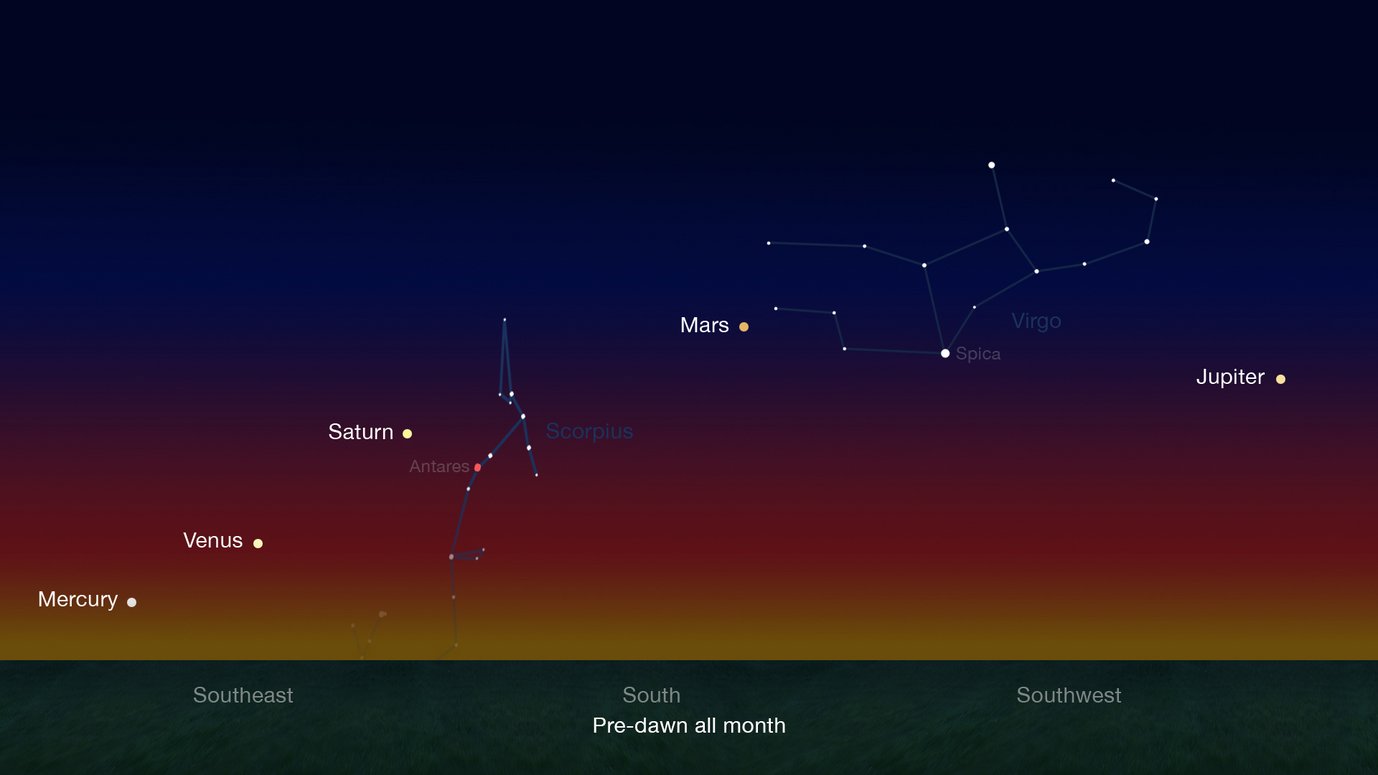Planet parade in the morning sky
Getting up early is worth it for the next few weeks: All five planets of our solar system that are visible to the naked eye gather in the morning sky
Our solar system is essentially flat. All the planets thus orbit the Sun in a plane which is called the ecliptic. As a result, an observer on planet Earth who looks for the other planets on the night sky, will always find them somewhere on a great circle: the zodiac.
Each planet has its particular orbital speed according to its distance from the Sun and Kepler's third law, which defines where on the zodiac to find it on a certain date. While the inner planets Mercury and Venus have to stay rather close to the Sun, which limits their night time appearance to the time around sunrise and sunset, the other planets may be visible all night long. Thus for a given date and time, several, only one or even no planet at all may could be observed.

Right now (and ongoing for the next few weeks) however, actually all planets visible to the naked eye gather in the morning sky, like pearls on a string. Closest to the Sun - and thus to the eastern horizon before sunrise - is Mercury, followed by the much brighter Venus. More to the south, Saturn and Mars can be found, concluded by Jupiter in the west.
In the coming days, the waning Moon will additionally make its way through the planet parade: While it sets together with Jupiter on January 28th, it is close to Mars on February 1st near last quarter, and rises together with Mercury and Venus as a thin crescent on February 6th.
